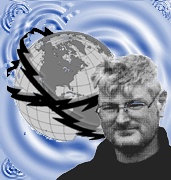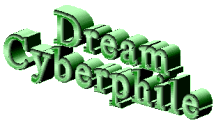| Wilkerson, Richard Catlett (2000 Fall). Scott Hughes and Jean
Campbell discuss computer connections at the Washington D.C. Conference. Dream Time Cyberphile. Dream Time
17(4).
The Dream Cyberphile by Richard Catlett Wilkerson This Cyberphile reviews the computer connections at the 2000
Washington D.C. conference with stories from Jean Campbell and Scott
Hughes. Links to ASD paranormal dreaming events and forums are also
offered and a reminder to sign up for the ASD E-study groups. ASD E-Study Groups If you have an e-mail account you can participate in one or more
E-Study groups. Whether you are interested in dreaming in Cyberspace,
clinical dreams, dreams and nightmares, dream research, dreams and psi or
dreams and healing, there is a group just for you. Stop by the E-Study
forum and pick your group: or e-mail for the list to:
Dream Psi Online For a summary of dream psi online, see ASD Dream Time, Winter 2000
Volume 17 #1 Also, see ASD Paranormal Dreaming Forum online, hosted by Ed Kellogg,
Ph. D., which includes clear definitions of subtle dream phenomena,
results from ASD dream telepathy contests, ASD presentations on dream psi
and other asd publications on paranormal dreaming. Café Magic 2000 by Jean Campbell jccampb@aol.com There are people who still believe that this year's Computer Cafe was magic, created by the dream gods. I'm one of them. About five weeks before the conference, the person scheduled to manage the Cafe left due to a new job, and then the person doing the programming decided not to attend the conference. It took me about a week to answer the question of whether I'd take over. There were no volunteers left, and I don't know a gigabyte from a giggle. "Oh, sure," I finally replied. "Why not." Almost immediately, the first person sent to me by Richard Wilkerson was Scott Hughes, who not only knew all about computers, but was willing to bring his own equipment, including the digital camera with which we could put conference photos online overnight and take Member Page portraits. And the second new volunteer I heard from? Also a computer literate. And so it went. All of the new volunteers, in addition to being wonderfully reliable, were programmers or people who knew computers. The result was a Cafe which allowed people to chat online, to check their e-mail, and view dream software. They could talk about web sites, take a look at Peggy Coats' wonderful Cafe design, and explore the increasingly complex world of dreams in cyberspace. I could tell that the ASD web site has been doing its job when I discovered that a significant number of new members were at the conference because of what they'd seen online. My own feeling of what happened at the Cafe could be summed up by the response of one of the hotel waiters, who stopped in the doorway to see why forty people were sitting in a room staring at a computer. He heard a voice coming from the computer speakers. "They're where?" he asked. I explained that one presenter was in Canada, the other in Japan. His eyes widened. "It's a miracle," he exclaimed. And it was. [Visit with Jean Campbell online on the ASD bulletin board]: http://www.asdreams.org/subidxdiscussionsbboard.htm The "Computer Cafe" makes ASD 2000 "virtual" by Scott Hughes When I was drafted for the "Computer Cafe" project at the ASD 2000 conference, I had no idea what it was. I said I would help anyway, as this was my first conference. Richard Wilkerson informed me the project was lead by Jean Campbell. Her book "Dreams beyond Dreaming" had been on one my bookshelves for at least ten years, but I had never met her. I met Jean on the first day of the conference in Washington DC, where we are given a big round table in the product room where I could deploy the laptops and other equipment I had brought. I also brought a few copies of my book to give away. I didn't know what to expect, but I had a beachhead at the conference. The big moment, towards the end of the conference, was Jayne Gackenbach's http://www.sawka.com/spiritwatch/ and Robert Bosnak's http://www.cyberdreamwork.com cyber presentation. The night before, while trying to unwind from the conference, my laptop "rang". I thought it was the phone at first, then I figured out it was my computer. It had never "rang" before. I didn't know it could do that. The moderator of the cyber conference, Jill Fischer was placing a free international Internet phone call from Australia using FireTalk software (www.firetalk.com) to work out last minute details of the next day's global dream presentation. The ASD cyber presentation: We sat up about 25 chairs in front of the cafe table, which were quickly filled. On the table was an IBM ThinkPad laptop with Benwin speakers and a 28.8k connection to the Internet. Next to this was a projector to display Jayne's PowerPoint slides. In the FireTalk virtual auditorium people from across the globe gathered. Our presenters, Jayne Gackenbach (in Canada) and Robert Bosnak (in Japan) introduced themselves. Different members of the audience came up and spoke into the built-in microphone to tell our presenters "hi". Jayne and Robert's voices as well as those of our virtual audience boomed across the room. Jill Fischer, the moderator, kept order over this group of virtual and physical participants from her computer in Australia. Jayne and Robert presented their vision of the future of dreaming. I felt like the "Berlin wall" of dreaming had fallen. Dreamwork and dream sharing would now be global processes that ignored international borders. Dreamwork groups could now meet in "virtual auditoriums" with their participants being on any continent across the globe. They could talk to each other through their computer speakers as if they were in the same physical room. I would compare it to dream "teleconferencing". This was being organized through a website called www.cyberdreamwork.com using a free software product called FireTalk found at www.firetalk.com. As the presentation ended a "feeling" was in the air. The ASD 2000 conference had transcended its physical location in Washington, DC and reached out across the globe - if only for a moment. Things wouldn't be the same any more. The balance of dreamwork had shifted. [2001, March 28: Firetalk is no longer in operation. At this time we are using www.paltalk.com ] [Scott will be hosting the 2001 Dream Odyssey Computer Café. You can
contact him at]: scott@ideapyramid.com This article may be slightly altered from its original form on the ASD Newsletter to conform to Web Format.
|


 Return to ASD HOMEPAGE
Return to ASD HOMEPAGE